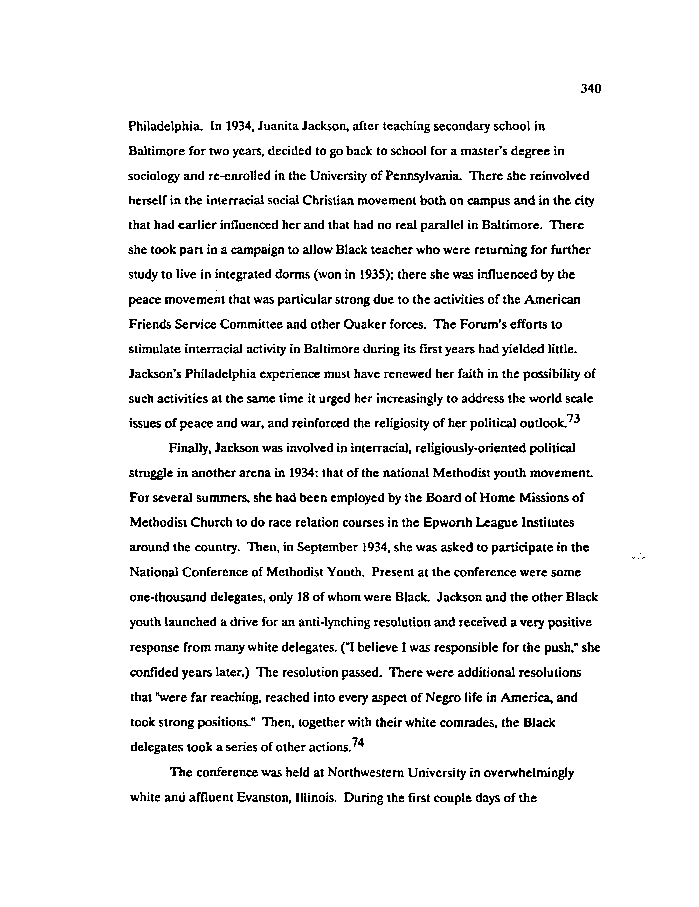|
340
Philadelphia. In 1934, Juanita Jackson, after teaching secondary school in
Baltimore for two years, decided to go back to school for a master's degree in
sociology and re-enrolled in the University of Pennsylvania. There she reinvolved
herself in the interracial social Christian movement both on campus and in the city
that had earlier influenced her and that had no real parallel in Baltimore. There
she took part in a campaign to allow Black teacher who were returning for further
study to live in integrated dorms (won in 1935); there she was influenced by the
peace movement that was particular strong due to the activities of the American
Friends Service Committee and other Quaker forces. The Forum's efforts to
stimulate interracial activity in Baltimore during its first years had yielded little.
Jackson's Philadelphia experience must have renewed her faith in the possibility of
such activities at the same time it urged her increasingly to address the world scale
issues of peace and war, and reinforced the religiosity of her political outlook. •*
Finally, Jackson was involved in interracial, religiously-oriented political
struggle in another arena in 1934: that of the national Methodist youth movement
For several summers, she had been employed by the Board of Home Missions of
Methodist Church to do race relation courses in the Epworth League Institutes
around the country. Then, in September 1934, she was asked to participate in the
National Conference of Methodist Youth. Present at the conference were some
one-thousand delegates, only 18 of whom were Black. Jackson and the other Black
youth launched a drive for an ami-lynching resolution and received a very positive
response from many white delegates. ("I believe I was responsible for the push," she
confided years later.) The resolution passed. There were additional resolutions
that "were far reaching, reached into every aspect of Negro life in America, and
took strong positions." Then, together with their white comrades, the Black
delegates took a series of other actions/4
The conference was held at Northwestern University in overwhelmingly
white and affluent Evanston, Illinois. During the first couple days of the
|

